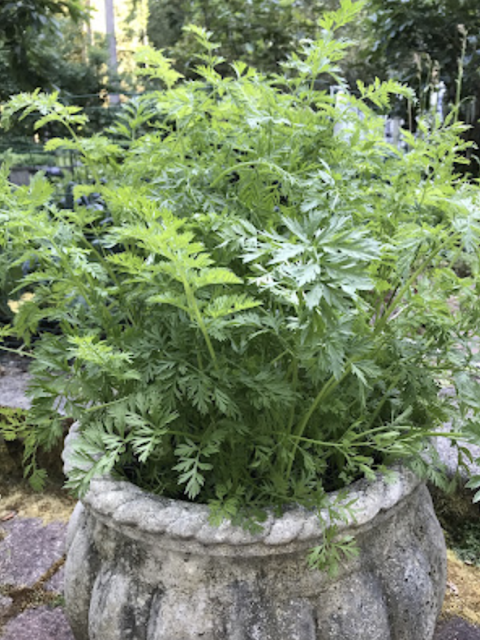I wanted to show you the progress on my carrots grown from seeds in pots on the walkway in our garden.
This is my farthest along pot of carrots out of six. One pot was badly damaged by slugs. It's now only partially full of carrot plants, so not a total loss. The other pots are somewhere in between that one and this one in the photo. This pot is also the first that I seeded, then thinned. So that explains part of why it's a little further along than the rest. My garden is only partly sunny, getting about 4 to 5 hours of full sun per day and about 2 to 3 hours of filtered sun.
I planted Danvers Half Long carrot seeds beginning in mid-April. In June I thinned the carrots, using the greens in cooking. In early July I thinned this pot again. I now have about 40 carrots of varying sizes growing in this one pot.
The largest carrot that I can right now is about 3/4-inch across the root top. I don't dig around the soil much. I just happened to notice this one large top showing a little.
I read a tip this season on growing carrots. The writer said he attributed his super large carrots to watering the plants twice a day. I've been trying that when I can. Perhaps that will help my carrots grow big, too.
The tallest leaves in this pot are about 20 inches from the soil surface. My pot is about 16 inches deep and 16 inches across at the opening.
My plan is to begin pulling carrots from this pot in mid-September for fresh eating. I expect I will finish harvesting all of the carrots in late October or early November, and I will store them in the fridge wrapped in paper towels plus large plastic bags. We were eating our garden carrots in winter last season. And they stayed fresh and crisp for us stored that way.
It's clearly possible to grow some veggies in small spaces, such as balconies, tiny patios, or front porches and steps. So often we think we need to have a lot of land to grow some of our own food. That's just not true. I've known folks who grow enough veggies in a small front yard that they give away armloads to food banks each week in July and August.
Something to chew on. . .



